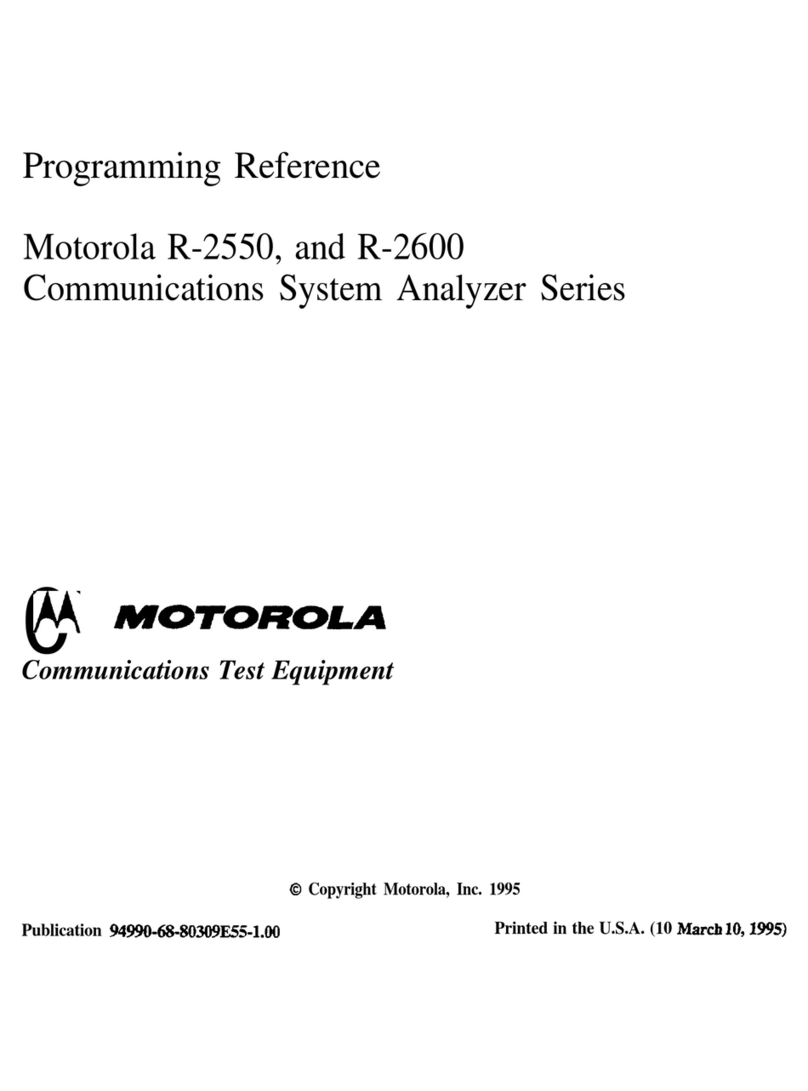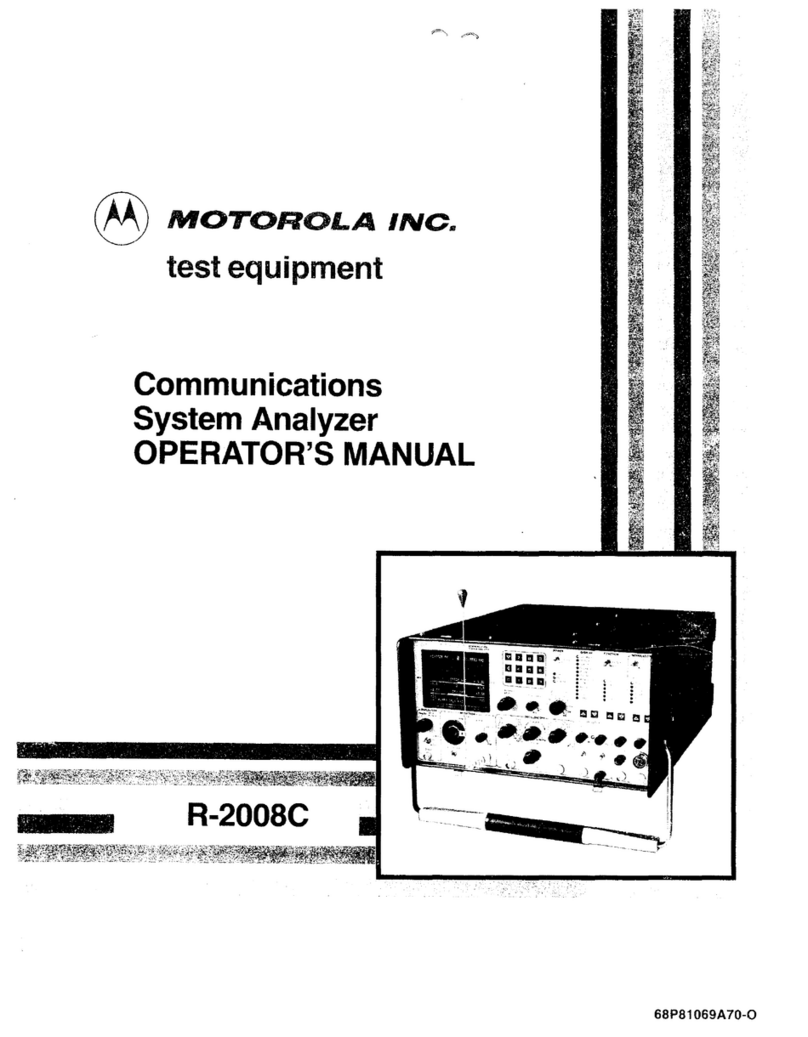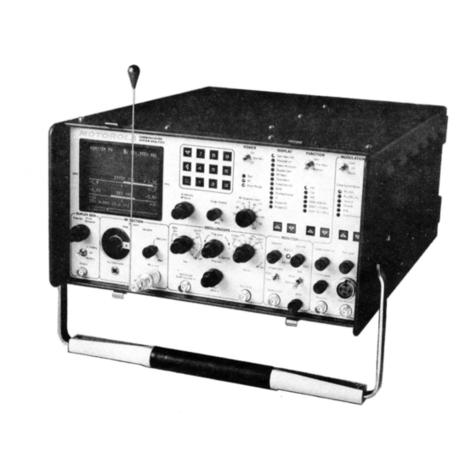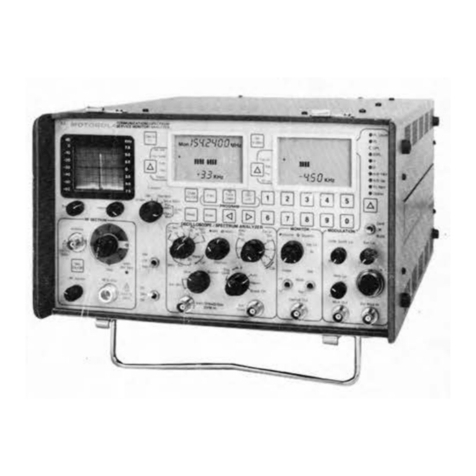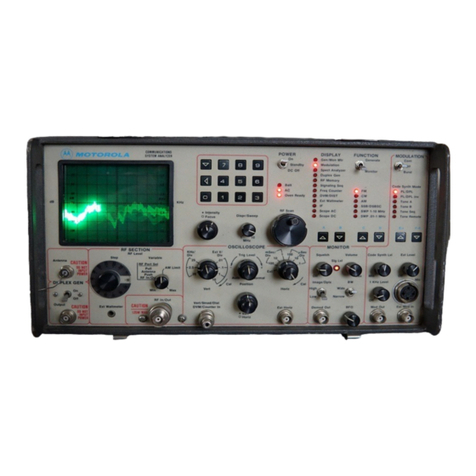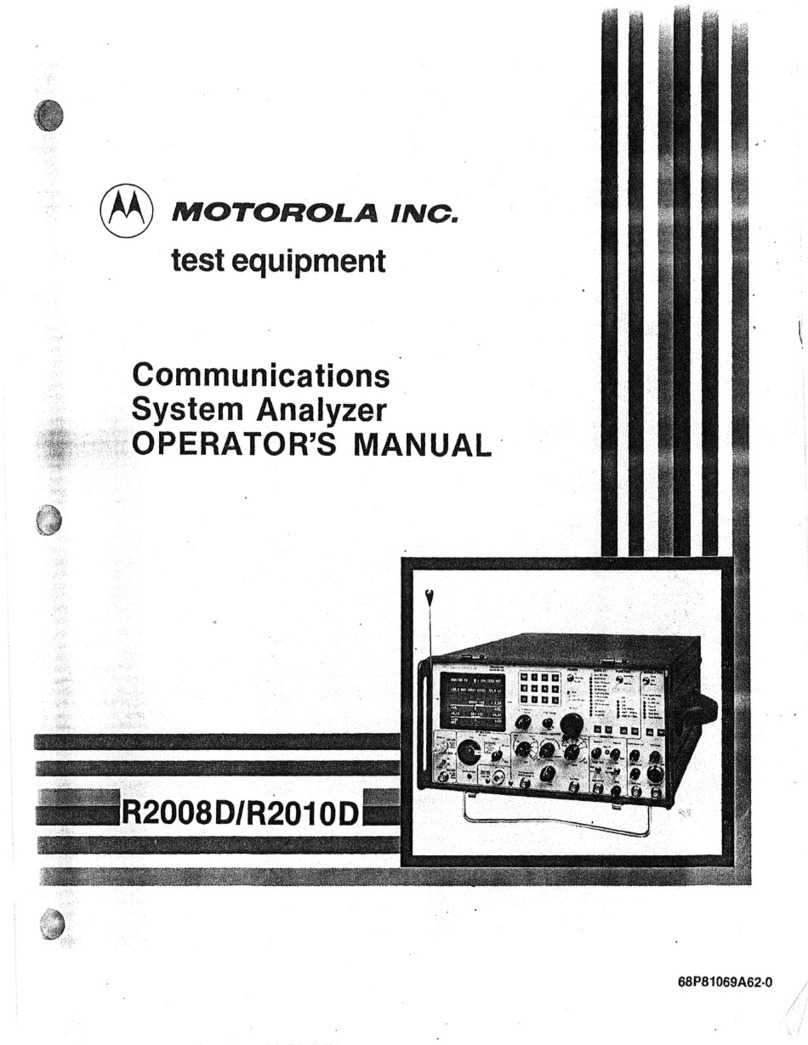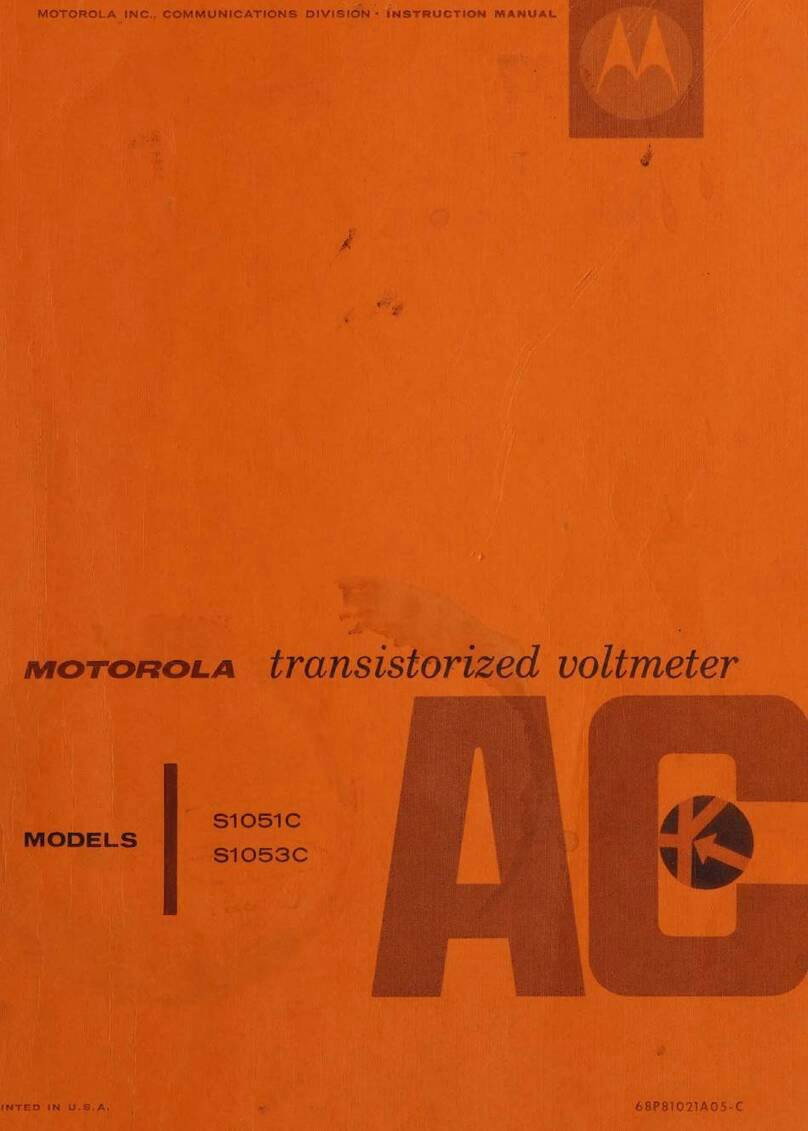
LIST OF ILLUSTRATIONS
Figure Page TABLE OF CONTENTS
(CONT)
1-1
Communications System Analyzer
..........................................................
1-0 Paragraph Page
2-1
Accessories Supplied with Analyzer
.........................................................
2-4 SECTION
7-
LOW VOLTAGE POWER SUPPLY (A1)
3-1
Typical Communication System Analyzer Packaging
.........................................
3-1
7-1
General
..................................................................................
7-1
4-1
Controls, Indicators, and Connectors, Front Panel
...........................................
4-2 7-2 Input Power Control
......................................................................
7-1
4-2 Controls, Indicators, and Connectors, Left Side Panel
.......................................
4-3 7-6 DC Output Control
.......................................................................
7-1
4-3 Controls, Indicators. and Connectors, Rear Panel
............................................
4-3
4-4 System Analyzer Time Base Calibrate Test Setup and CRT Display
..........................
4-13
7-9 Protection
Circuitry
.......................................................................
7-1
7-13 High Voltage Supply Control
.............................................................
7-2
7-14 Switcher Module A1A1
...................................................................
7-2
4-5 Duplex Generation Test Setup and CRT Display
............................................
4-14 7-17 Output Module A1A2
......................................................................
7-2
4-6 Spectrum Test Setup and CRT Display
.....................................................
4-16
4-7 Wattmeter Test Setup and CRT Display
....................................................
4-17
7-21
Control Module A1A3
....................................................................
7-3
7-24 Relay Module A1A4
......................................................................
7-4
4-8 Test Setup for
FM
Receiver Sensitivity Using Generator and SINAD SECTION 8 - SCOPE AMPLIFIER (A2)
Meter with CRT Display
...................................................................
4-18
8-1
General
..................................................................................
8-1
4-9 Test Setup for Pager and Alert Functions with CRT Display
.................................
4-19 8-2 Deflection Amplifiers
.....................................................................
8-1
4-10 Test Setup for Using DVM and Signal Generate with CRT Display
...........................
4-20 8-3 Horizontal Timebase Generator
...........................................................
8-1
5-1
Communication System Analyzer. Top View Cover Removed
.................................
5-6
5-2 Communication System Analyzer, Bottom View Cover Removed
..............................
5-6
8-5 Horizontal Switching
......................................................................
8-1
8-6 Intensity Control
.........................................................................
8-1
8-8 Focus Control
............................................................................
8-1
5-3 Communication System Analyzer Block Diagram
..........................................
5-9 8-9 Astigmatism, Geometry, and Trace Rotation
...............................................
8-1
5-4 Generate Mode Block Diagram
............................................................
5-12
5-5 Power Meter Block Diagram
...............................................................
5-14 SECTION 9 - SCOPE/DVM CONTROL MODULE (A3)
5-6
Monitor
Mode Block Diagram
.............................................................
5-15
5-7 Duplex Generator Block Diagram
..........................................................
5-17
9-1
General
..................................................................................
9-1
9-4 Scope Vertical Control
....................................................................
9-1
9-7 SSB Detection
............................................................................
9-1
5-B
Code Synthesizer Block Diagram
..........................................................
5-18 9-8 455 kHz PLL
.............................................................................
9-2
5-9 Frequency Counter Block Diagram
........................................................
5-19 9-9 Scope Horizontal Control
.................................................................
9-2
5-10 Digital Voltmeter (DVM) Block Diagram
....................................................
5-20
5-11
Oscilloscope Block Diagram
...............................................................
5-22
9-11
Synthesizer Sweep Control.
...............................................................
9-2
9-12 Scope Z-Axis Control
.....................................................................
9-2
9-13 Modulation Display Control
...............................................................
9-2
5-12 Sinad Meter Block Diagram
...............................................................
5-24 9-17 Peak Detector
............................................................................
9-3
5-13 Scope Amplifier Alignment Points
.........................................................
5-25
5-14 Front Panel Interface Alignment Points
....................................................
5-28
5-15 Scope/DVM Control Alignment Points
.....................................................
5-29
9-18 DVM Control
.............................................................................
9-3
9-21
SINAD Detection
.........................................................................
9-4
9-22 Module Control.
..........................................................................
9-4
5-16 Horizontal Time Base Alignment Points
....................................................
5-29 SECTION
10
-RECEIVER (A4)
5-17 DVM Input Buffer Alignment Points
........................................................
5-30
10-1
General
.................................................................................
10-1
5-18 Scope/DVM Control Test Point Numbering
.................................................
5-30
5-19 Processor 1/0
A/D
Alignment Points
.......................................................
5-31
5-20 Scope/DVM Control Char Sweep and Sinad Alignment Points
...............................
5-32
10-2 Down Converter
.........................................................................
1
0-1
10-4 Linear IF
Amplifier
and Detectors
.........................................................
10-1
10-8 Audio Switching and Filtering
............................................................
10-1
10-10 Logarithmic Amplifier and Detector
.......................................................
10-2
10-11
Alarm Generator and Audio
Amplifier
.....................................................
10-2
10-12 Module Control.
.........................................................................
10-2
vi
iii
